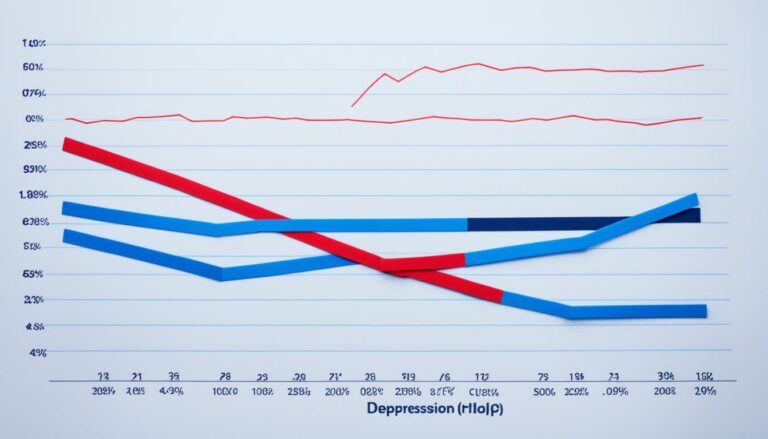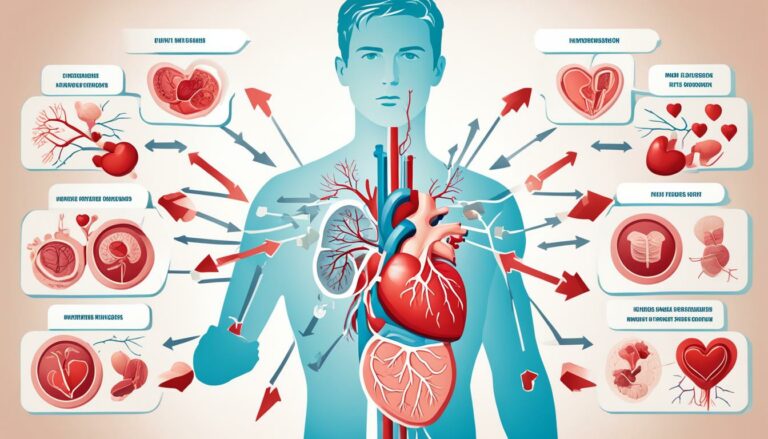Teen Mental Health Impact: Causes & Outcomes
Teenagers today face a myriad of challenges as they navigate the complexities of adolescence. One significant issue that cannot be overlooked is the impact of mental health on teenagers. Mental health disorders can have far-reaching consequences, affecting not only the well-being of teenagers but also their future prospects and quality of life.
According to the World Health Organization, approximately one in seven 10-19-year-olds globally experiences a mental disorder, making up 13% of the global burden of disease in this age group. This is an alarming statistic that highlights the prevalence of mental health issues among teenagers. Depression, anxiety, and behavioral disorders are among the leading causes of illness and disability among adolescents, impacting their daily functioning and overall happiness.
Furthermore, mental health conditions during adolescence can have long-term consequences. In fact, suicide is the fourth leading cause of death among 15-29 year-olds, underscoring the urgency of addressing mental health concerns during this critical period of development. Failing to provide support and treatment for teenagers’ mental health issues can limit their opportunities for a fulfilling adult life.
Key Takeaways:
- Approximately one in seven 10-19-year-olds globally experiences a mental disorder.
- Depression, anxiety, and behavioral disorders are leading causes of illness and disability among adolescents.
- Suicide is the fourth leading cause of death among 15-29 year-olds.
- Mental health issues during adolescence can have long-term consequences.
- Addressing mental health concerns in teenagers is crucial for their future well-being.
Prevalence of Mental Health Disorders in Adolescence

Globally, it is estimated that 1 in 7 (14%) 10-19 year-olds experience mental health conditions. This staggering statistic highlights the significant impact that mental health has on adolescents. Emotional disorders, such as anxiety and depression, are common among teenagers, with anxiety disorders being the most prevalent. These conditions can be debilitating, affecting an individual’s daily life, relationships, and overall well-being.
Behavioural disorders, including Attention-Deficit/Hyperactivity Disorder (ADHD) and conduct disorder, are more common among younger adolescents. These disorders often manifest in challenging behaviors, impulsivity, and difficulty in social interactions. The consequences of these disorders can have long-lasting effects on a teenager’s development and ability to navigate the world.
Eating disorders are also prevalent during adolescence, such as anorexia nervosa and bulimia nervosa. These disorders impact not only physical health but also have severe psychological effects on teenagers. The pressures of societal beauty standards and body image can contribute to the development of these disorders, further emphasizing the importance of addressing mental health in this age group.
Psychotic disorders, which include symptoms such as hallucinations and delusions, often emerge in late adolescence or early adulthood. These disorders require specialized care and intervention to manage the psychological effects and prevent further deterioration.
The rates of suicide and self-harm among adolescents are alarming. Teenagers facing mental health challenges may resort to self-destructive behaviors as a method of coping, highlighting the urgent need for access to mental health support and intervention.
Risk-taking behaviors, including substance use and sexual risk-taking, are prevalent in this age group. These behaviors not only pose immediate dangers to teens’ health but also have long-term consequences for their mental and physical well-being.
Teenagers experiencing mental health conditions are at risk of facing a range of challenges. From emotional distress to disruptive behaviors, these psychological effects on teenagers can severely impact their lives.
H3: Research Findings on Mental Health Prevalence:
| Population | Prevalence of Mental Health Disorders |
|---|---|
| 10-19 year-olds globally | 1 in 7 (14%) experience mental health conditions |
| Anxiety disorders | Most prevalent among adolescents |
| Eating disorders | Commonly emerge during adolescence |
| Psychotic disorders | Often emerge in late adolescence or early adulthood |
| Suicide and self-harm rates | Significant concerns among adolescents |
| Risk-taking behaviors | Prevalent in this age group |
Impact on Family and Home Life

Adolescents with mental health disorders often experience difficulties within their own families. Their behavior can strain relationships and lead to feelings of distress and disruption. Parents and caregivers may struggle to understand and support their children, leading to marital discord and strained relationships with extended family and social networks.
The challenges within the family can also contribute to social isolation. Adolescents may withdraw and avoid social interactions, leading to a sense of loneliness and disconnection. This further exacerbates their mental health issues and makes it difficult for them to receive the support they need.
It is in the family environment that children learn how to relate and cope with stress. A supportive family can provide the necessary emotional and social support that teenagers with mental health conditions require. On the other hand, a strained family dynamic can add to the burden and exacerbate their symptoms.
Table: Impact on Family and Home Life
| Effects on Adolescents | Consequences for Families |
|---|---|
| Increased conflict and tension | Marital discord |
| Isolation and withdrawal | Strained relationships with extended family and social networks |
| Higher levels of distress and disruption | Feelings of helplessness and guilt |
| Long-term impact on family dynamics | Difficulty finding balance and maintaining a cohesive family unit |
Providing resources and support to families is essential in helping them navigate the impact of mental health issues on their home life. Education and awareness campaigns can help families understand their teenager’s struggles and provide them with the tools to support their mental well-being. Counseling and therapy services can also be beneficial, allowing families to address and work through the challenges together.
Effects on Education

Mental health disorders can have significant consequences for the education of teenagers. When adolescents struggle with mental health issues, they often experience difficulties in various aspects of their academic lives.
One of the challenges they face is difficulty concentrating and retaining information. These mental health issues can greatly impact their ability to stay focused, absorb new material, and perform well in their studies.
Additionally, forming positive peer relationships becomes more challenging for teenagers dealing with mental health concerns. Social interactions can be affected, leading to feelings of isolation and loneliness.
As a result of these difficulties, adolescents with mental health disorders often experience poor academic performance. Their lack of concentration, impaired learning abilities, and limited social connections can all contribute to lower grades and overall educational struggles.
“Mental health issues can have a negative impact on a teenager’s ability to learn, concentrate, and form meaningful connections with peers. As a result, their academic performance may suffer.”
Furthermore, teenagers with mental health conditions may engage in high-risk behaviors, such as substance abuse, self-harm, or even suicide attempts. These behaviors can further disrupt their education and well-being.
The consequences of mental health disorders on education are evident in the higher rates of suspension, expulsion, and school dropout among teenagers with these conditions compared to their peers.
To mitigate the negative effects on education, early detection and intervention are crucial. It is essential to identify mental health issues in teenagers as early as possible and provide appropriate support and treatment.
School-based mental health services play a vital role in improving academic outcomes for students struggling with mental health issues. These services provide access to trained professionals who can offer counseling, therapy, and other resources to help students cope with their challenges.
Benefits of School-based Mental Health Services:
- Early identification and support for mental health concerns
- Accessible and convenient mental health services for students
- Improved academic performance through targeted interventions
- Promotion of positive mental well-being and resilience
By addressing mental health challenges in schools and providing effective support systems, we can help teenagers overcome obstacles and achieve success in their education.
| Effects on Education | Consequences of Mental Health Disorders on Education |
|---|---|
| Difficulty concentrating and retaining information | Impaired learning abilities and lower academic performance |
| Challenges in forming positive peer relationships | Feelings of isolation and limited social connections |
| Engagement in high-risk behaviors | Increased risk of suspension, expulsion, and school dropout |
| Early detection and intervention | Improved academic outcomes and well-being |
| School-based mental health services | Access to counseling, therapy, and support |
Social and Community Implications

Adolescents with mental health conditions face a range of social and community implications that can impact their well-being and overall quality of life. These implications include social exclusion, discrimination, and stigma. Teenagers with mental health conditions may find themselves being ostracized or left out by their peers due to misunderstandings or fear. This can lead to feelings of isolation and loneliness, exacerbating their mental health challenges.
Furthermore, teenagers with mental health conditions are more vulnerable to experiencing bullying or violence. Their struggles may make them targets for mistreatment, further compounding their emotional distress. The emotional and physical harm caused by these negative experiences can have lasting effects on their mental health and overall development.
In addition to direct social interactions, media influence and societal expectations can significantly impact the mental well-being of teenagers with mental health conditions. Constant exposure to unrealistic standards of beauty, success, and happiness can create a sense of inadequacy and fuel feelings of low self-worth. This gap between an adolescent’s reality and their aspirations for the future can contribute to feelings of hopelessness and despair.
Teenagers facing mental health challenges may also encounter additional obstacles if they are part of marginalized groups or living in challenging circumstances. Those in humanitarian or fragile settings, with chronic illness, or from minority ethnic or sexual backgrounds may be at greater risk of mental health conditions. Unfortunately, limited access to support and services can further perpetuate the negative impact on their mental well-being.
To address these social and community implications, it is crucial to create supportive environments within families, schools, and communities. Encouraging empathy, understanding, and acceptance can help combat discrimination and stigma surrounding mental health. Education and awareness programs can play a vital role in promoting inclusivity and reducing negative attitudes towards mental health conditions in teenagers.
“Creating a supportive and understanding community is essential for promoting the mental well-being of teenagers with mental health conditions.”
By fostering a supportive environment, teenagers can feel safe to seek help, share their experiences, and receive the support they need. Schools and community organizations can work together to develop comprehensive mental health programs, providing resources and appropriate interventions tailored to the needs of teenagers with mental health conditions.
Next, we will explore the role of mental health services and support in addressing the challenges faced by vulnerable teenagers.
| Table: Social and Community Implications | |
|---|---|
| Implications | Description |
| Social Exclusion | Adolescents with mental health conditions may be left out or isolated by their peers. |
| Discrimination | Teenagers may face mistreatment or prejudice due to their mental health challenges. |
| Stigma | Negative societal attitudes towards mental health conditions can affect teenagers’ self-perception and well-being. |
| Bullying and Violence | Those with mental health conditions may be more susceptible to bullying or violent encounters. |
| Media Influence | Unrealistic standards portrayed in media can negatively impact teenagers’ self-esteem and aspirations. |
| Challenging Circumstances | Certain groups, including those in fragile settings or from marginalized backgrounds, may face increased mental health risks. |
| Access to Support | Limited availability of mental health services can further exacerbate the challenges faced by teenagers. |
Mental Health Services and Support

Access to quality mental health care and support is vital for teenagers with mental health conditions. Early detection and treatment are crucial in addressing their needs. Non-pharmacological approaches and holistic interventions should be prioritized, based on the rights of children and guided by evidence-based practices. Governments and organizations like the World Health Organization and UNICEF are working to develop strategies and programs to enhance mental health services for adolescents. School-based mental health centers and counseling services can play a crucial role in providing support to students.
It is important for teenagers to have access to a range of mental health services to cater to their specific needs. These services can include:
1. Counseling Services
Counseling services provide a safe and supportive environment where teenagers can discuss their thoughts and emotions with trained professionals. Counselors can help adolescents manage stress, cope with mental health challenges, and develop healthy coping mechanisms.
2. Therapy and Intervention Programs
Therapy and intervention programs, such as cognitive-behavioral therapy (CBT) and dialectical behavior therapy (DBT), can be effective in treating various mental health disorders in teenagers. These programs focus on identifying and changing unhealthy thought patterns and behaviors.
3. Support Groups
Support groups bring together teenagers who are facing similar mental health challenges. These groups provide a sense of belonging and support, allowing teenagers to share their experiences, learn from others, and gain valuable insights into managing their mental health.
4. Psychiatric Services
Psychiatric services involve the assessment, diagnosis, and treatment of mental health disorders using medication management. Psychiatrists can work collaboratively with counselors and therapists to provide comprehensive care for teenagers with complex mental health needs.
| Mental Health Services for Teenagers: | Description: |
|---|---|
| Counseling Services | Providing a safe and supportive environment for teenagers to discuss their thoughts and emotions with trained professionals. |
| Therapy and Intervention Programs | Offering evidence-based therapies and interventions to address various mental health disorders. |
| Support Groups | Bringing together teenagers facing similar mental health challenges to provide support and valuable insights. |
| Psychiatric Services | Assessing, diagnosing, and treating mental health disorders using medication management. |
These services aim to provide teenagers with the necessary support and tools to manage their mental health effectively. By addressing mental health issues early on and providing access to appropriate care, we can help teenagers thrive and lead fulfilling lives.
Mental Health in the Context of COVID-19
https://www.youtube.com/watch?v=ALmG6EIkyRE
The COVID-19 pandemic has had a profound impact on the mental health of teenagers. The combination of isolation, disruptions in routines, increased stress levels, and limited access to mental health services has exacerbated existing mental health conditions and even triggered new ones.
Teenagers are experiencing heightened feelings of anxiety, depression, and loneliness as they navigate the challenges of the pandemic. The sudden shift to remote learning, social distancing measures, and the loss of regular social interactions have all taken a toll on their emotional well-being.
The Biden-Harris Administration has recognized the urgent need to address the youth mental health crisis and has taken steps to invest in school-based mental health services. These services aim to provide support and resources to teenagers who have been adversely affected by the pandemic.
While the impact of COVID-19 on teenage mental health is significant, it also highlights the importance of ongoing support and resources to help teenagers navigate these challenging times. By prioritizing mental health care and providing accessible and comprehensive services, we can mitigate the long-term implications of the pandemic on the mental well-being of our teens.
It is crucial for parents, educators, and communities to be aware of the signs of mental distress in teenagers and to provide the necessary support and resources. By fostering open conversations about mental health and ensuring that teenagers feel supported and understood, we can help them navigate these unprecedented times and emerge stronger.
Challenges and Disparities in Mental Health Care
Access to mental health care can be a significant challenge for adolescents, particularly for vulnerable populations. Low-income families, racial and ethnic minorities, as well as those involved in the child welfare or juvenile justice system, often face disparities and barriers to receiving appropriate and timely mental health care.
Efforts should be made to address these disparities and promote equitable access to mental health services for all teenagers. This includes expanding the availability of culturally competent and affordable care, as well as implementing strategies to improve accessibility and remove barriers that prevent vulnerable adolescents from receiving the support they need.
By prioritizing mental health care and actively working towards reducing disparities, we can ensure that all teenagers have equal opportunities to access the services and resources necessary for their mental well-being.
The Role of Schools and Communities
Schools and communities play a vital role in promoting positive mental health among teenagers. By implementing mental health promotion and prevention interventions, we can strengthen coping skills, enhance emotional well-being, and create supportive social environments for adolescents. Recognizing the importance of mental health, training educators, and providing necessary resources within educational settings are essential steps in supporting teenagers’ well-being.
“Mental health is just as important as physical health. Schools and communities need to work together to create a nurturing environment where teenagers can thrive emotionally and socially.”
Collaboration between schools, mental health professionals, and community organizations is key. This collaboration facilitates access to comprehensive support systems for teenagers with mental health conditions, ensuring they receive the help they need.
The Role of Schools
Within the school setting, educators can play a crucial role in promoting mental health. By incorporating mental health education into the curriculum, they can raise awareness and help reduce the stigma surrounding mental health. The provision of safe spaces and confidential counseling services within schools allows teenagers to seek support in a familiar and comfortable environment.
School-based mental health centers and counseling services offer readily accessible resources for students struggling with mental health issues. These services provide a range of support, including individual counseling, group therapy, and crisis intervention. By providing early intervention and ongoing support, schools can effectively address teenage mental health challenges.
The Role of Communities
In addition to schools, community organizations play a vital role in supporting teenage mental health. They can offer a wide range of programs and services, such as support groups, workshops, and recreational activities that promote positive mental well-being. Collaborating with local mental health professionals and organizations allows communities to provide comprehensive and holistic support to teenagers.
“Communities need to come together to create a strong support network for teenagers facing mental health challenges. When we work together, we can make a real difference in their lives.”
Community awareness campaigns and events can help reduce stigma and raise public understanding of teenage mental health. Engaging parents, teachers, and community leaders in these initiatives creates a united front in supporting teenagers and providing them with the resources they need to thrive.
Let’s strive for schools and communities that prioritize the mental health of teenagers, fostering an inclusive and supportive environment where they can grow and flourish.
| Benefits of School and Community Involvement: | Ways to Promote Teenage Mental Health: |
|---|---|
| • Increased access to mental health services | • Incorporate mental health education into the curriculum |
| • Reduction of stigma surrounding mental health | • Provide safe spaces for open conversation and support |
| • Creation of supportive social environments | • Offer school-based mental health centers and counseling services |
| • Collaboration between schools, mental health professionals, and community organizations | • Engage in community awareness campaigns to reduce stigma |
| • Provision of comprehensive support systems | • Encourage community organizations to provide programs and services |
Conclusion
The mental health implications for teens are significant and should be a priority for society as a whole. The impact of mental health issues on teenagers can be far-reaching, affecting their daily lives, relationships, and overall well-being. Adolescents with mental health conditions often face challenges such as social exclusion, academic difficulties, and limited access to support and services.
Early detection, intervention, and sustained support are essential in addressing the needs of teenagers with mental health issues. By prioritizing mental health care and creating supportive environments, we can help teenagers navigate these challenges and promote positive mental health.
Addressing disparities in access to services is crucial in ensuring that all teens have equal opportunities to receive appropriate and timely care. By working together as a society, we can improve outcomes for this vulnerable population and ensure that they have the resources and support they need to thrive.
FAQ
How does mental health affect teenagers?
Mental health can have a profound impact on teenagers, affecting their daily functioning, relationships, and future well-being. It can lead to social exclusion, academic difficulties, and limited access to support and services.
What are the prevalence rates of mental health disorders in adolescence?
Globally, it is estimated that 1 in 7 teenagers experience mental health conditions. Emotional disorders like anxiety and depression are common, while behavioral disorders such as ADHD and conduct disorder are more prevalent among younger adolescents.
How does mental health impact family and home life?
Adolescents with mental health disorders often experience difficulties within their families, leading to strained relationships and social isolation. It is important to provide resources and support to families to help them navigate the impact of mental health issues.
What are the effects of mental health on education?
Mental health issues can significantly impact a teenager’s education. They may have difficulty concentrating, retaining information, forming positive peer relationships, and often exhibit high-risk behaviors. Early detection and intervention, along with access to school-based mental health services, can help improve academic outcomes.
What are the social and community implications of teenage mental health?
Adolescents with mental health conditions may face social exclusion, discrimination, and stigma. They may be more vulnerable to experiencing bullying or violence, and societal expectations can exacerbate their struggles. Creating supportive environments within families, schools, and communities is crucial for promoting the well-being of teenagers.
What mental health services and support are available for teenagers?
Access to quality mental health care and support is vital for teenagers with mental health conditions. Early detection and treatment, along with non-pharmacological and evidence-based interventions, are crucial. School-based mental health centers and counseling services can play a crucial role in providing support to students.
How has the COVID-19 pandemic affected teenage mental health?
The pandemic has worsened mental health challenges among teenagers due to isolation, disruptions in routines, increased stress levels, and limited access to mental health services. Ongoing support and resources are crucial to help teenagers navigate these challenging times.
What are the challenges and disparities in mental health care for teenagers?
Disparities in access to mental health care exist, affecting vulnerable populations such as low-income families, racial and ethnic minorities, and those involved in the child welfare or juvenile justice system. Efforts should be made to address these disparities and promote equitable access to services.
What role do schools and communities play in promoting teenage mental health?
Schools and communities play a vital role in promoting positive mental health among teenagers. Implementing mental health promotion and prevention interventions, training educators, and providing resources within educational settings are essential. Collaboration between schools, mental health professionals, and community organizations can facilitate access to comprehensive support systems.
What is the overall impact of mental health on teenagers?
Mental health has a significant impact on teenagers, affecting their daily lives, relationships, and future well-being. Failing to address mental health conditions during adolescence can have long-term consequences, limiting opportunities for a fulfilling adult life. Prioritizing mental health care, creating supportive environments, and addressing disparities in access to services can help teenagers navigate the challenges they face and improve outcomes.







